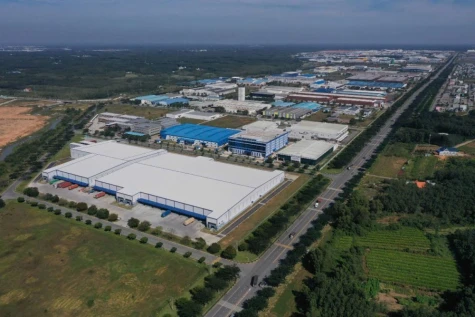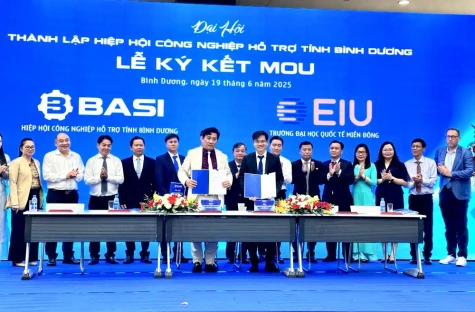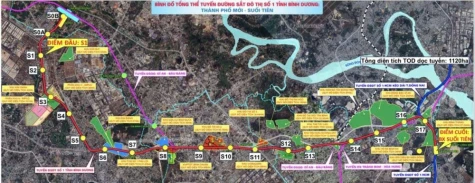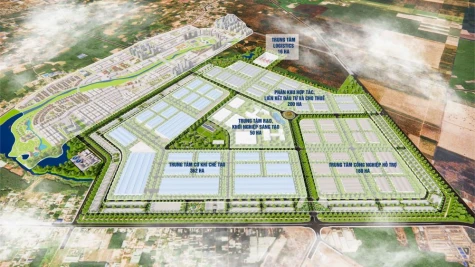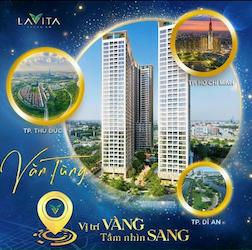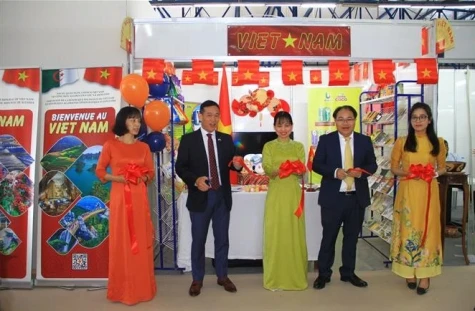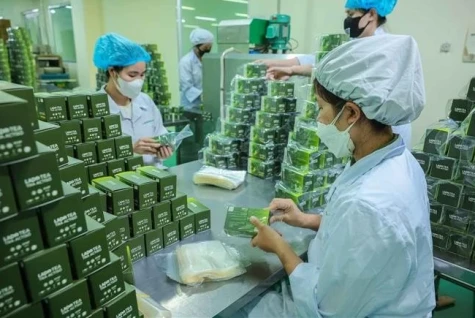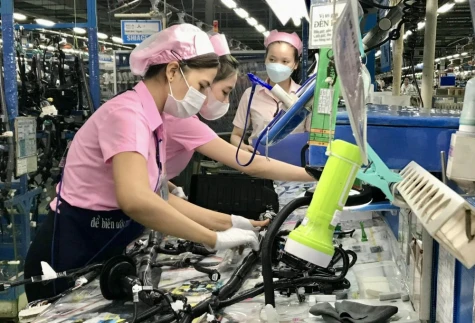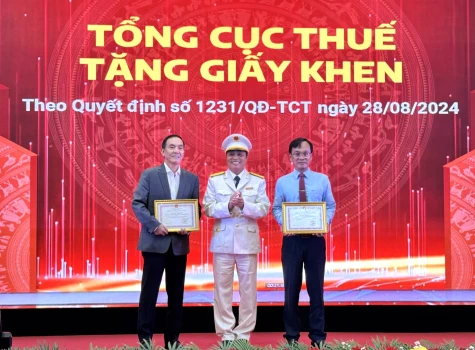Binh Duong and Ho Chi Minh (HCM) city have been making great efforts to accelerate the completion of traffic infrastructure connectivity. The expectation is that developing this connectivity will not only eliminate bottlenecks and unlock growth drivers for both localities, but also for the entire Southeastern region; promote cooperation in river tourism development and expand urban development space along the Saigon River corridor.
Completing traffic connectivity
According to a recent report from the working session between leaders of Binh Duong province and HCM city, the two localities have a total of 12 bilateral cooperation initiatives, with six of them implemented during the 2023-2024 period. Specifically, both sides have collaborated on component projects of HCM city’s belt roads 3 and 4, studied the investment extension of Metro Line 1 to Binh Duong and coordinated the supply of construction materials for component projects under HCM city's belt road 3 project.

One of the projects receiving significant attention from residents and businesses is the gateway connection project between Binh Duong province and HCM city (National Highway 13), which will be upgraded and expanded from Binh Trieu bridge to Binh Phuoc intersection. Ho Chi Minh city’s People’s Committee has allocated funds for 2024 to prepare for investment and has issued an implementation plan. Both localities have also agreed to upgrade and expand Vinh Binh bridge through public investment, connecting it to National Highway 13 in Binh Duong province. The estimated investment for the bridge upgrade and expansion is around VND 300 billion. HCM city is currently studying and updating the expansion plan to be in line with National Highway 13’s planned eight-lane, 64-meter-wide configuration in Binh Duong. For this project, HCM city’s People’s Committee has proposed Binh Duong provincial People’s Committee to submit the plan to provincial People's Council for approval. Both localities will then jointly report to the Prime Minister, requesting authorization for HCM city to act as the lead agency for project implementation in accordance with regulations.
Regarding the development of interprovincial bus routes, HCM city is drafting a resolution outlining the roadmap for transitioning and supporting the conversion of public passenger transport vehicles to electric and green energy-powered buses. This resolution is expected to be approved at the meeting of HCM city People's Council in March 2025. Meanwhile, Binh Duong province has proposed HCM city and relevant authorities to facilitate the development of green bus routes connecting to the airport, Metro Line 1 and Vietnam National University – HCM city.
At the working session, Binh Duong province proposed adjustments to the Tan Van interchange, the parallel bridge to Binh Goi bridge under the component project 5 and the investment in a 15.3km section of the belt road 3 project overlapping with the My Phuoc - Tan Van expressway. Accordingly, Binh Duong provincial People’s Committee requested HCM city’s People’s Committee to approve the completion of the Tan Van interchange using surplus funds from other component projects within the HCM city belt road 3 project, based on available surplus and contingency funding... Meanwhile, Binh Duong province will allocate funds to invest in the remaining three branches by adjusting the approved investment plans for the component project 5 in the side of Binh Duong and component project 1 in the side of HCM city.
Developing river tourism connectivity
A representative from HCM city Department of Construction stated that the development potential along the Saigon River corridor is substantial, particularly for linked tourism products and tour packages that connect ecological attractions, historical sites and traditional craft villages in Binh Duong province such as Bach Dang Islet, Dai Nam Tourist Area, Hoi Khanh Pagoda, the ceramic craft village…To support tourism growth, Binh Duong needs to upgrade tourist boat terminals at key locations like Bach Dang Park in Thu Dau Mot city and Phu Long Communal House in Thuan An city. Additionally, there is a proposal to introduce four-wheeled electric vehicle services in areas such as Thu Dau Mot city, Thuan An city and Di An city.
.jpg)
According to assessments by authorities from both localities, connecting Binh Duong's traditional craft villages with HCM city's cultural tourism sites will enhance visitors’ experiences and create opportunities for businesses to explore tourism investment. Relevant agencies have proposed expanding the rapid bus system linking Ho Chi Minh city with Binh Duong, particularly routes from the center of HCM city to Binh Duong's popular tourist attractions. Currently, both localities are considering the development of a connection between the Long Binh Metro Operations Center (Metro Depot) and tourism packages integrating urban rail (Metro) to link key destinations in HCM city and Binh Duong province.
To ensure the synchronization of planning between the two localities, leaders of Binh Duong provincial People’s Committee and Ho Chi Minh city’s People’s Committee have agreed to assign the relevant local authorities near the proposed bridge construction sites to coordinate, finalize the locations and scale of the connecting bridges and use this as a basis for local planning integration.
Vo Van Minh, Vice Secretary of provincial Party Committee and Chairman of provincial People’s Committee stated that Binh Duong is focusing on investing in key arterial roads to enhance regional connectivity and drive widespread economic impacts. The province is also developing a modern and synchronous traffic system to alleviate congestion on major routes, creating more opportunities for cooperation and investment attraction in the region. In the upcoming phase, Binh Duong’s traffic investment strategy will prioritize connections to HCM city, seaports and international airports. Regarding the Saigon River corridor, both localities hold significant potential for expanding urban development space and eco-tourism.
Reported by Minh Duy-Translated by Kim Tin








